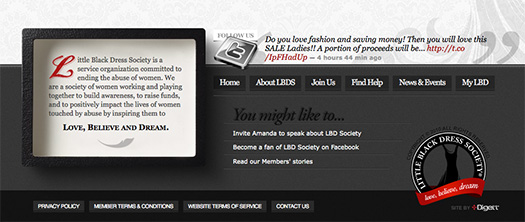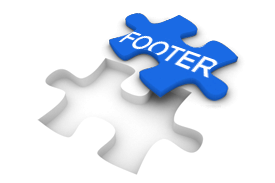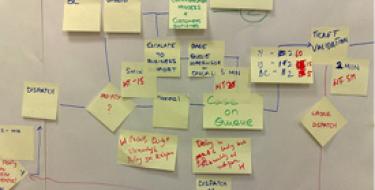Web Design: The Anatomy of a Footer
Last week I wrote about the anatomy of a header, an important piece to the website puzzle. This week, I want to scroll down to the bottom of the page and take a look at what makes up a footer.
Footers are fun to design, a playground of sorts. There isn't much required of a footer except that it should sit at the bottom of the page (hence the name). What goes in a footer can vary quite a bit, but like the header, should be designed to reflect the goals of the website.
All rights reserved

One line item that can almost always be found in the footer is copyright information. Although notice is not legally required to have domain over your content, it's an effective way to stake your claim and deter those who might otherwise steal from you. The simplest of footers contain this information alone.
Unique links

Another item common to the footer is a menu of additional links, a lot like global navigation — in some cases it might even be the same global menu as in the header. Its purpose is to 1) direct the user where to go once they've reached the end of the page and 2) provide links to unique pages that aren't otherwise in the navigation structure. Links to a privacy policy and a site map are a couple of good examples.
Affiliations

Sometimes it makes sense for a company to affiliate themselves with other organizations, as a way to legitimize their business and grow partnerships. For example, here in the Digett footer we give a big shout-out to Drupal, our platform of choice for building websites. If potential clients are interested in Drupal content management, we want them to know they've come to right place.
Mega-footer!

One of the hottest trends in web design in the past few years has been the rise of the mega-footer. Like I said, the footer is a playground and in a mega-footer, anything goes. This Little Black Dress Society footer has a mission statement, twitter feed, main navigation menu, global navigation menu, logo, and links to other pages a user might like to visit. This remains at the top of my favorite footers I've designed.
Fancy footwork
Often times, the footer is where I most like to express myself as a designer. Whether it's a simple copyright notice, or a mega-footer chock full of beautiful graphics and calls-to-action, consider expressing yourself as a company here too.
Do you have a good footer?
MONTHLY MARKETING INSIGHTS.
Get thought-provoking and actionable insights to improve how your firm makes a connection with your customers.





LEAVE A COMMENT
I was read your write-up about the anatomy of a header and now I've just read anatomy of footer. Both write-up are pretty effective for web design and I'm very willing to know more about webdesign from you. Thanks
Glad you liked the articles, Andy! We post articles on design and development pretty regularly, so keep visiting and we'll keep posting.